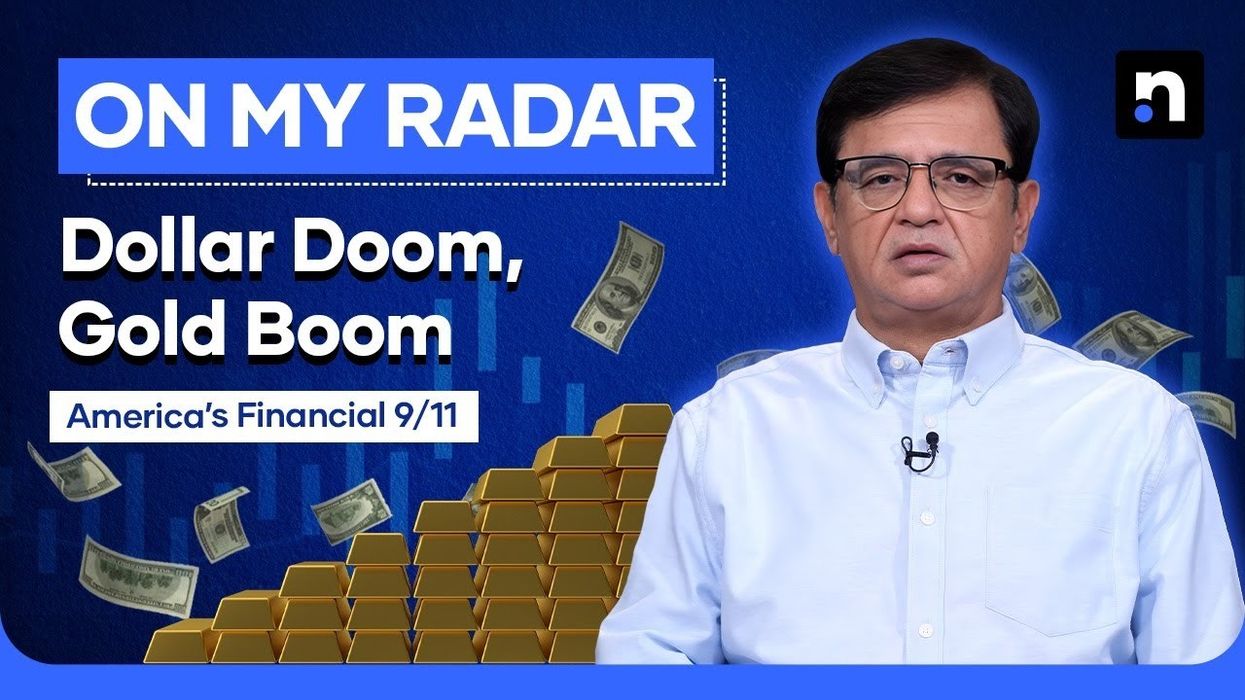Cracks in the currency crown: Is gold the new king?
Kamran Khan explains why US dollar is falling and why gold is gaining traction
News Desk
The News Desk provides timely and factual coverage of national and international events, with an emphasis on accuracy and clarity.
Dollar drops to 10-year low amid Fed uncertainty and political tensions.
Gold hits record $3,373/oz as investors flee risk and chase safe assets.
Global shift from dollar to gold, led by central banks in emerging markets.
It’s not every day that the US dollar -- long considered the king of global currencies -- starts to lose its shine. But that's exactly what’s happening now. The greenback has depreciated by 1.76% and fallen to a 10-year low against a basket of major global currencies.
At the same time, gold has surged to an all-time high of $3,412 per ounce, signaling a major shift in investor sentiment.
The reasons behind this financial turbulence run deeper than numbers on a screen. In the latest episode of On My Radar, Kamran Khan explained that tensions between President Donald Trump and the Federal Reserve have rattled markets.
The rift between Trump and Fed Chair Jerome Powell became public when White House economic adviser Kevin Hassett said the president’s team is exploring whether Powell can be removed.
Just a day earlier, Trump openly criticized Powell for wanting to lower interest rates, suggesting there was no point in delaying his dismissal. This sparked fears about the Fed's independence -- and with it, a dramatic fall in the dollar's value.
The fallout is visible across global currencies. The euro has surged past $1.15 — its strongest level against the dollar since November 2021. The British pound has strengthened by 0.5%, while the dollar has lost over 1% against the Swiss franc, hitting its weakest point in a decade.
Against the Japanese yen, the dollar has dropped to a seven-month low. Meanwhile, the New Zealand and Australian dollars have both risen to $0.64 -- a level not seen in years.
What’s driving this shift?
Eroding global confidence in the US currency, uncertainty over interest rates, and weakening trust in America's economic leadership are prompting investors to flee the dollar and turn to gold.
Financial experts note that when markets anticipate interest rate cuts, investments typically flow away from the dollar and into safer assets -- and gold remains the most trusted of them all. That’s why global gold prices have been shooting upward like a rocket.
As of April 21, 2025, spot gold prices have reached a record-breaking $3,373 per ounce. To put that in perspective: in April 2015, gold stood at $1,061 per ounce. By April 2020, it rose to $1,891, and in April 2024, it hit $2,265.
Many believed that was the peak -- but in just one year, prices have surged another 50%. Over the last five years, gold has doubled in international markets.
But in Pakistan, the price has skyrocketed by 525% due to the rupee’s steep devaluation. In January 2019, 24-carat gold was priced at PKR67,800 per tola and today, it has crossed the PKR350,000 mark.
But this gold rush is more than just a price trend -- it's a reflection of changing global power dynamics. Over the last five years, many central banks have been quietly increasing their gold reserves.
According to the World Gold Council, in 2022 alone, countries purchased 1,136 tons of gold -- the highest annual buying spree since 1950. Leading the charge were central banks in emerging economies like China, Russia, and India, all of which are aiming to reduce their dependence on the dollar.
According to Forbes, the top ten countries with the largest gold reserves now include the US, Germany, Italy, France, Russia, China, India, Japan, the Netherlands, and Turkey.
In fact, gold demand in China has grown so much that the government has installed “Gold ATMs” in shopping malls -- machines that instantly convert your gold jewelry into cash, based on weight and purity.
The upward momentum may not be over yet. Goldman Sachs has predicted that gold could hit $3,950 per ounce by the end of 2025 — and if global recession risks deepen, the price could go as high as $4,500.
Kamran Khan reveals that this shift signals a larger trend: Trump’s trade wars may have triggered a global economic realignment, with gold rising as the new pillar of trust.
But just how low the dollar will go -- and how high gold will rise -- remains anyone’s guess.











Comments
See what people are discussing